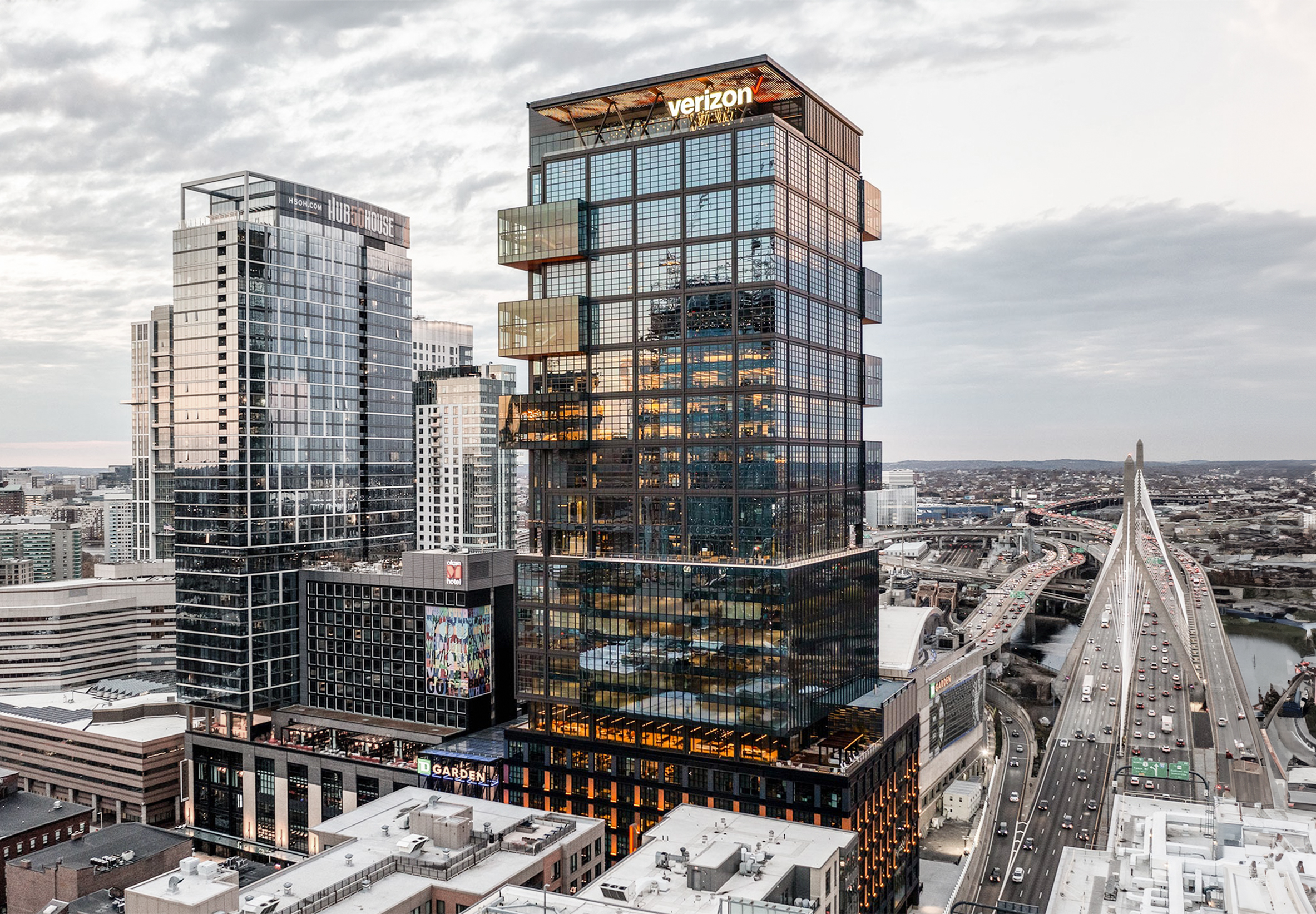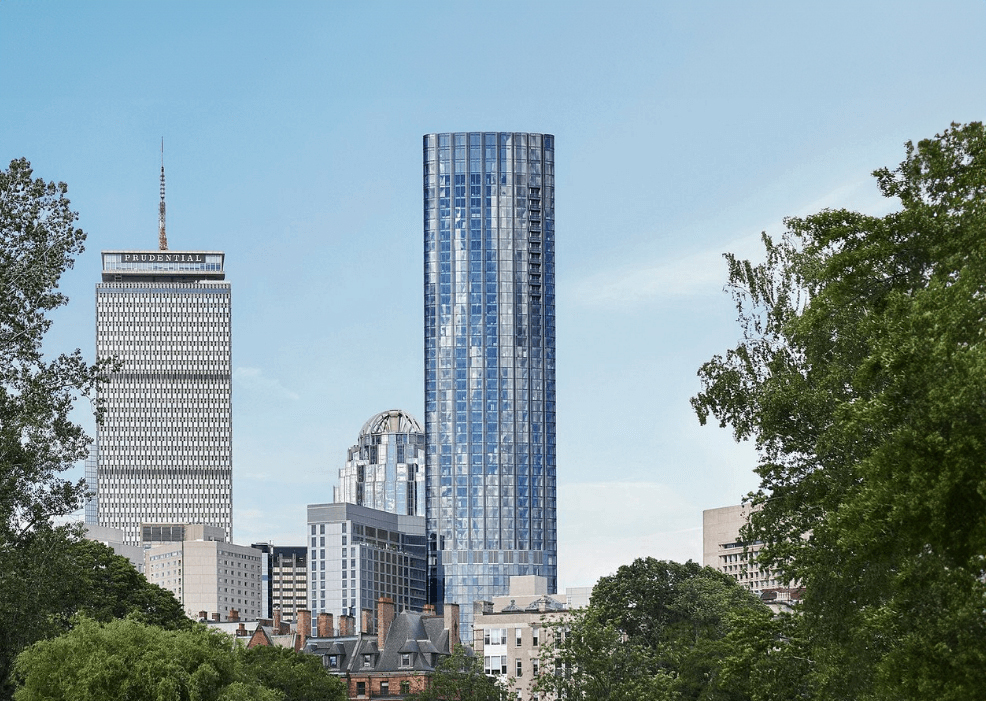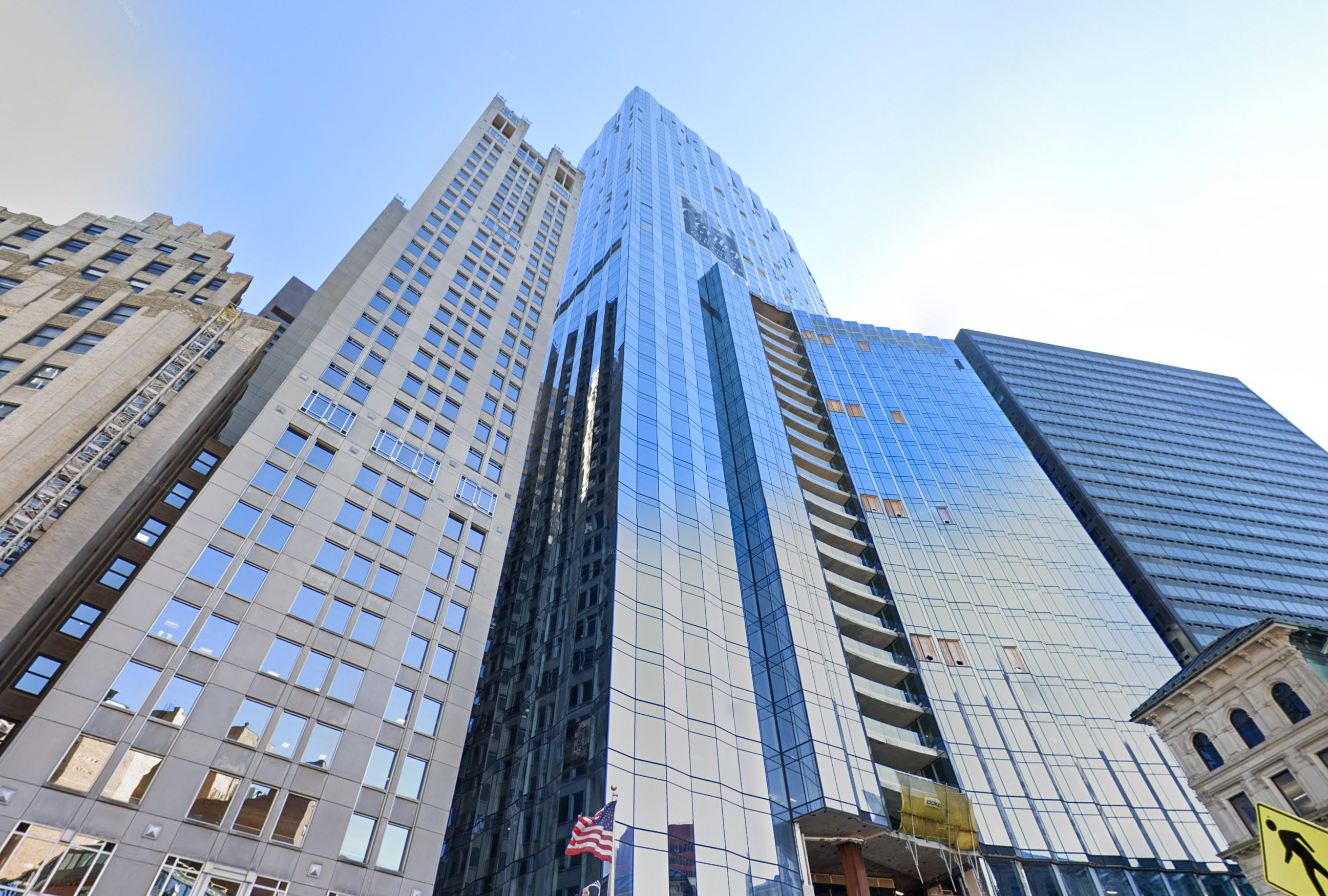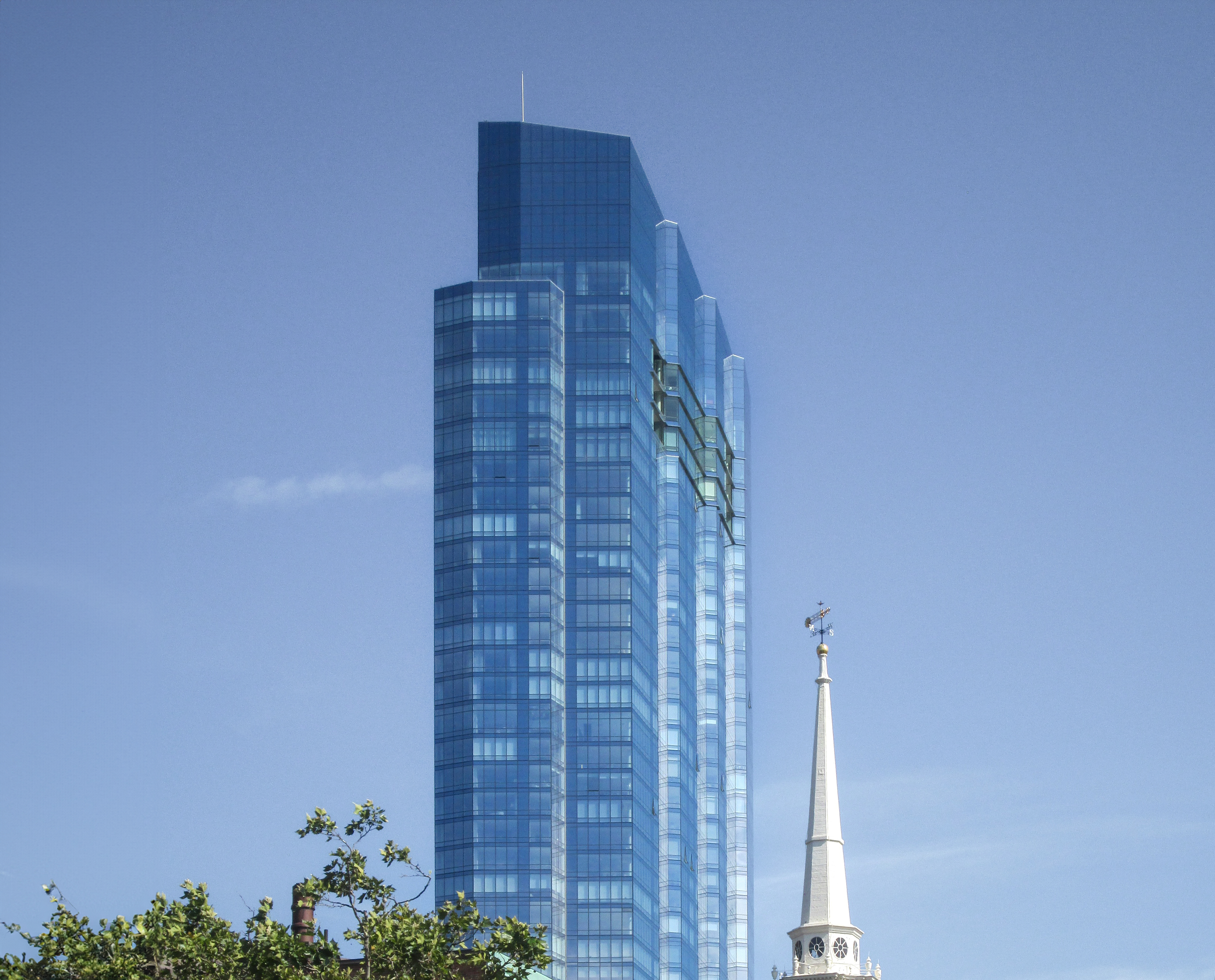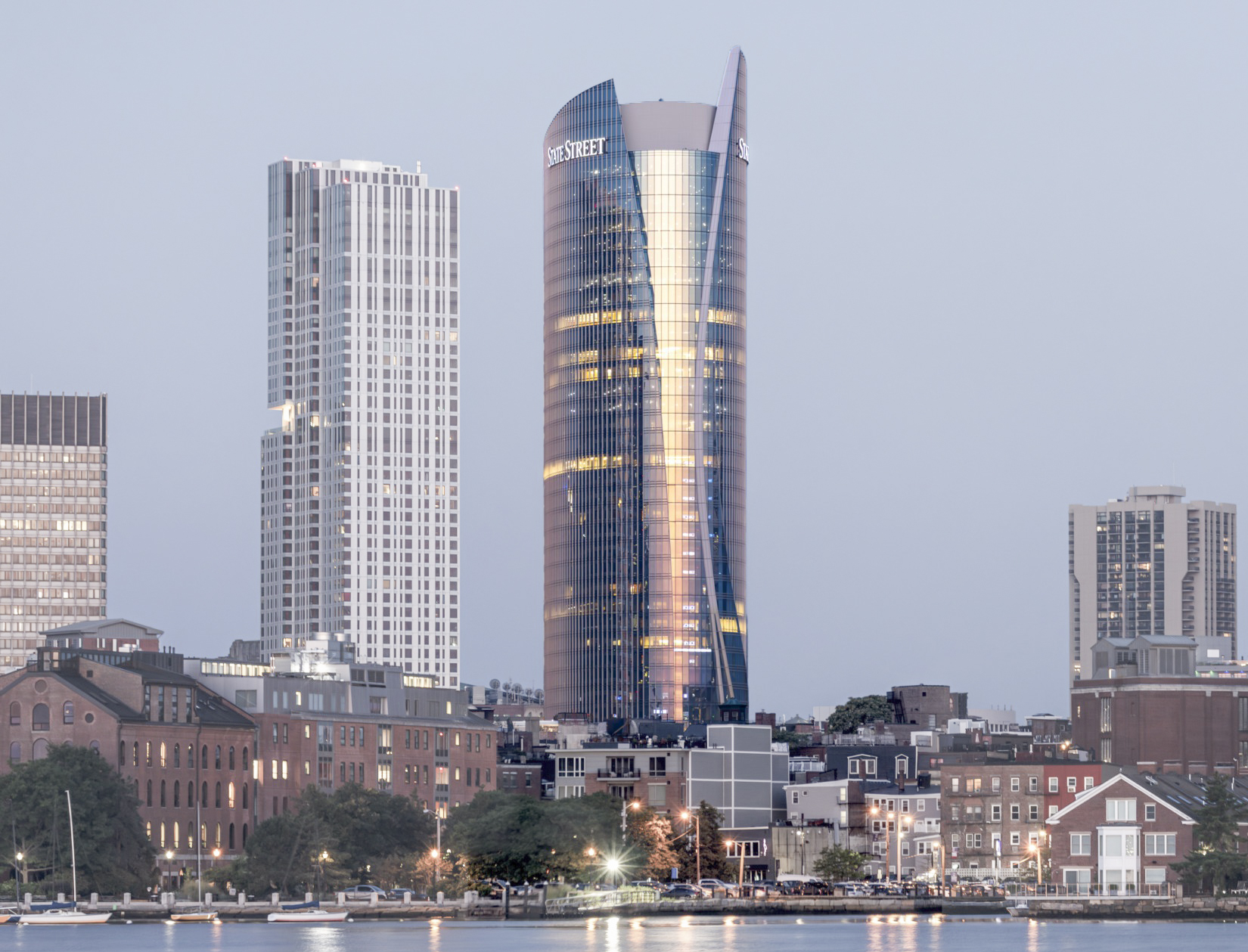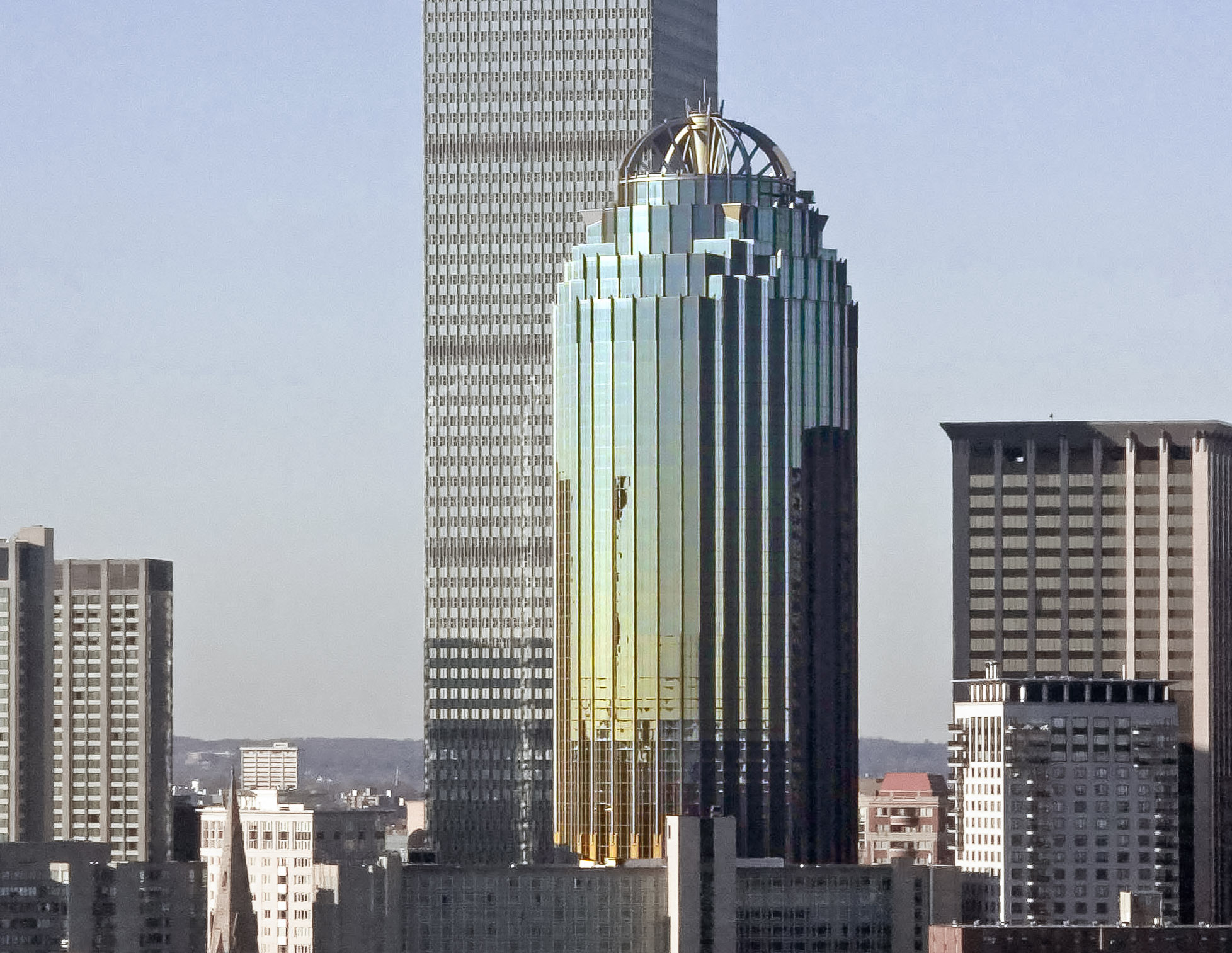The Hub on Causeway Office Tower is a Contemporary skyscraper designed by Gensler, in association with Stantec, Solomon Codwell Buenz, and built between 2019 and 2022 in Boston, MA.
Its precise street address is 100 & 120 Causeway Street, Boston, MA. You can also find it on the map here.
The Hub on Causeway consists of a six-story structural steel podium that supports three towers:The Hub on Causeway Office Tower , a hotel and the Hub on Causeway Residential Tower.
This complex is built over a four-level underground parking garage with a capacity for 800 cars and several MBTA subway tunnels. At the center lies a five-story arcade, sheltered by a steel-and-glass canopy and flanked by restaurants, markets, and shops. It culminates in a grand entrance designed to direct pedestrians toward the North Station transportation hub.
